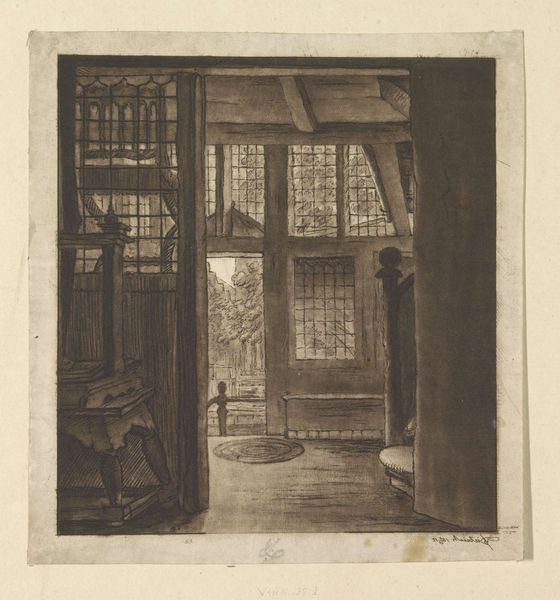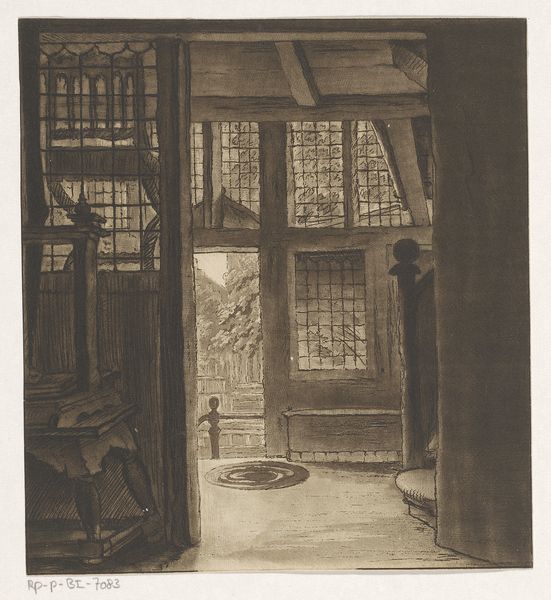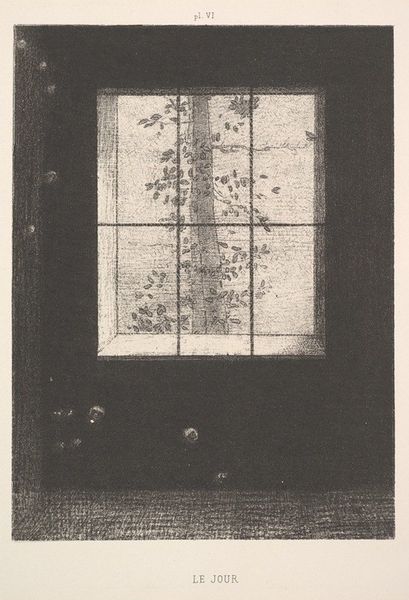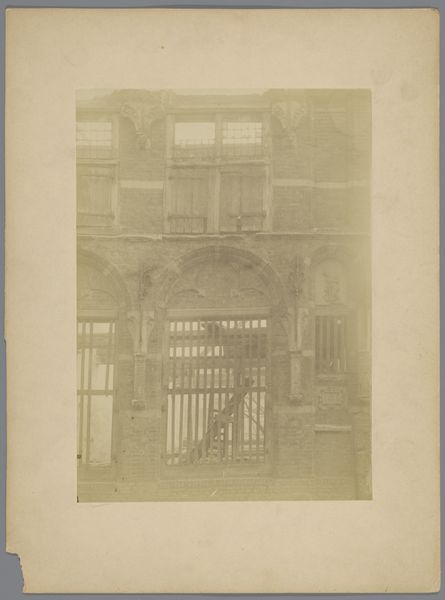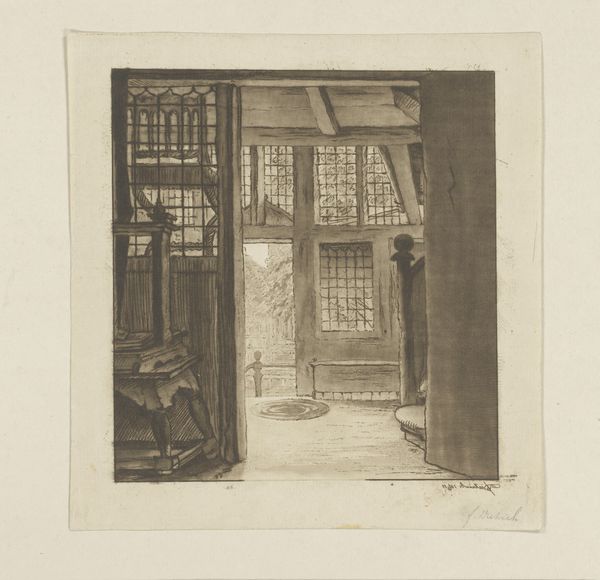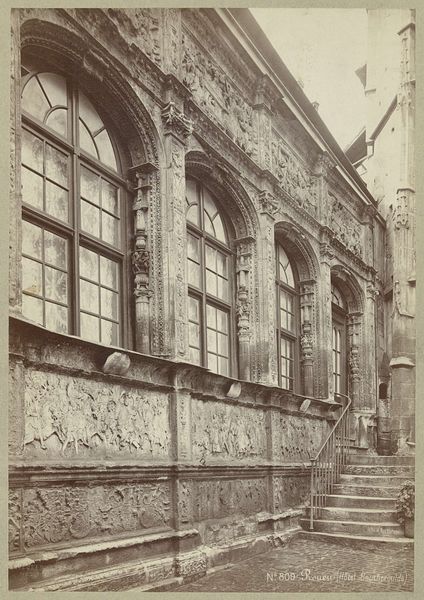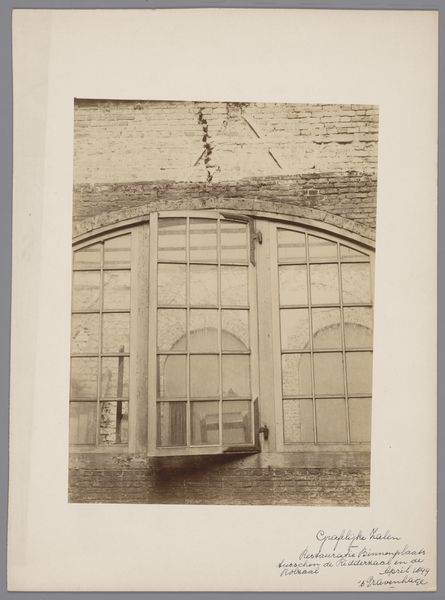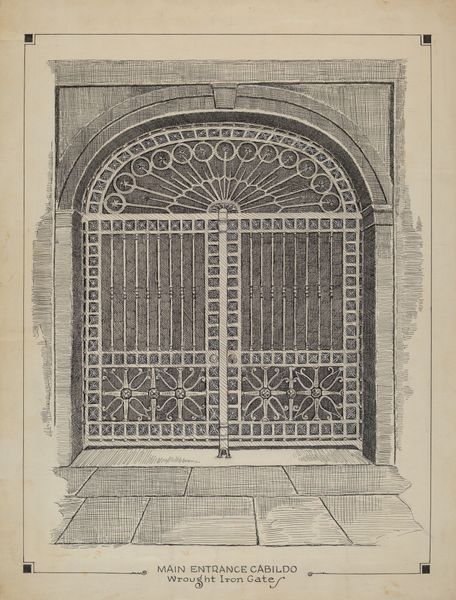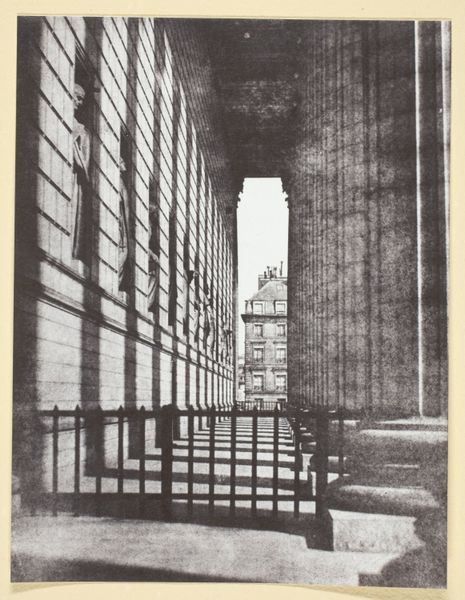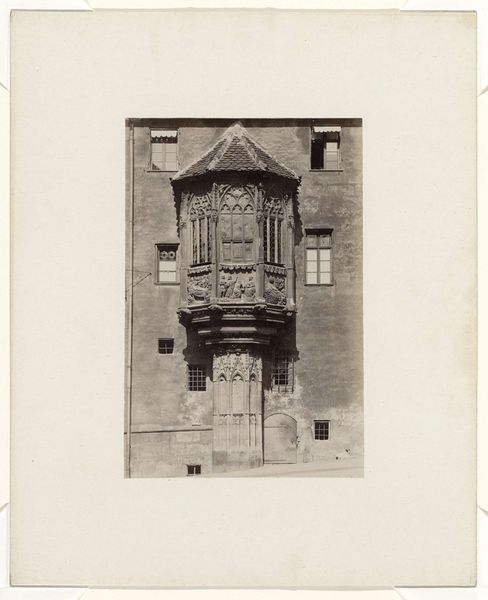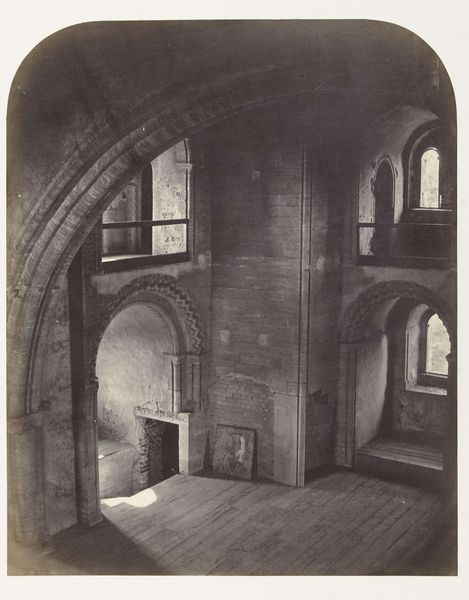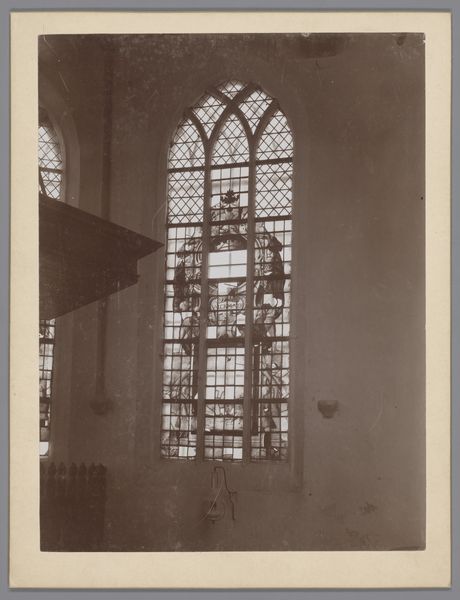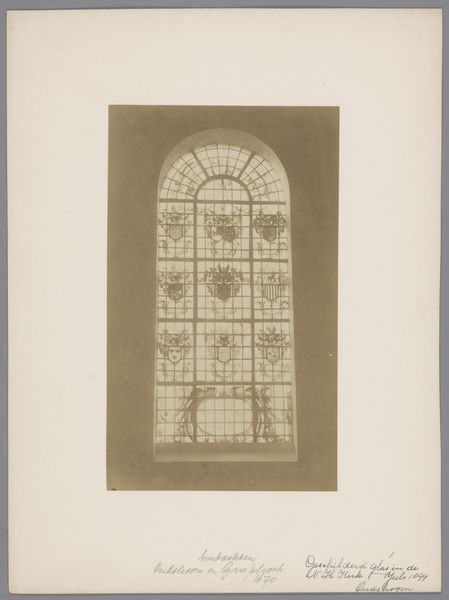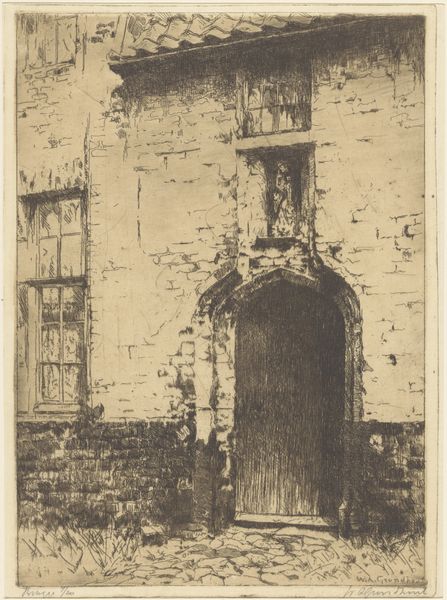
print, photography
# print
#
landscape
#
photography
Dimensions: height 135 mm, width 89 mm
Copyright: Rijks Museum: Open Domain
Editor: This is a photograph entitled "Doorkijk vanuit de refter van het Klooster Ter Apel," which translates to "View from the refectory of the Ter Apel Monastery." It appears to be from the 1920s or 30s. It's a simple composition, just a window, but there’s a feeling of confinement. How do you interpret this work? Curator: The power of this seemingly simple image lies in the complex relationship between the interior and exterior spaces, and the narratives that it brings to mind. We see the outside world, the promise of nature, framed and yet inaccessible through the bars. Consider what the monastery represents – a space often associated with withdrawal from the secular world, spiritual contemplation, and, historically, a place of refuge but also social control. Editor: So, the window isn’t just a window. Curator: Precisely. Think about how notions of enclosure intersect with ideas about visibility and freedom. Who would have been looking out of this window? Was it a monk, looking for peace, or someone held against their will? The photograph makes us question who has access to nature and on what terms. Does the architecture reinforce power dynamics related to religious authority and its impact on individuals and the broader community? Editor: It’s almost like the bars on the windows are representative of the internal struggles people might have had within those walls. Curator: Exactly. And how does this historical perspective resonate with contemporary issues of confinement, social exclusion, and access to green spaces? The photograph becomes a lens through which we can examine larger questions about societal structures and individual experiences. What are your thoughts on how this historical image informs our understanding of modern-day segregation and unequal access? Editor: That’s a good point. It’s interesting to consider that what was once a spiritual retreat could also represent limited freedom and even inequality. I hadn’t considered those implications. Curator: Ultimately, this work shows that even simple photographs are artifacts imbued with societal significance, inviting us to think critically about the narratives they portray.
Comments
No comments
Be the first to comment and join the conversation on the ultimate creative platform.
